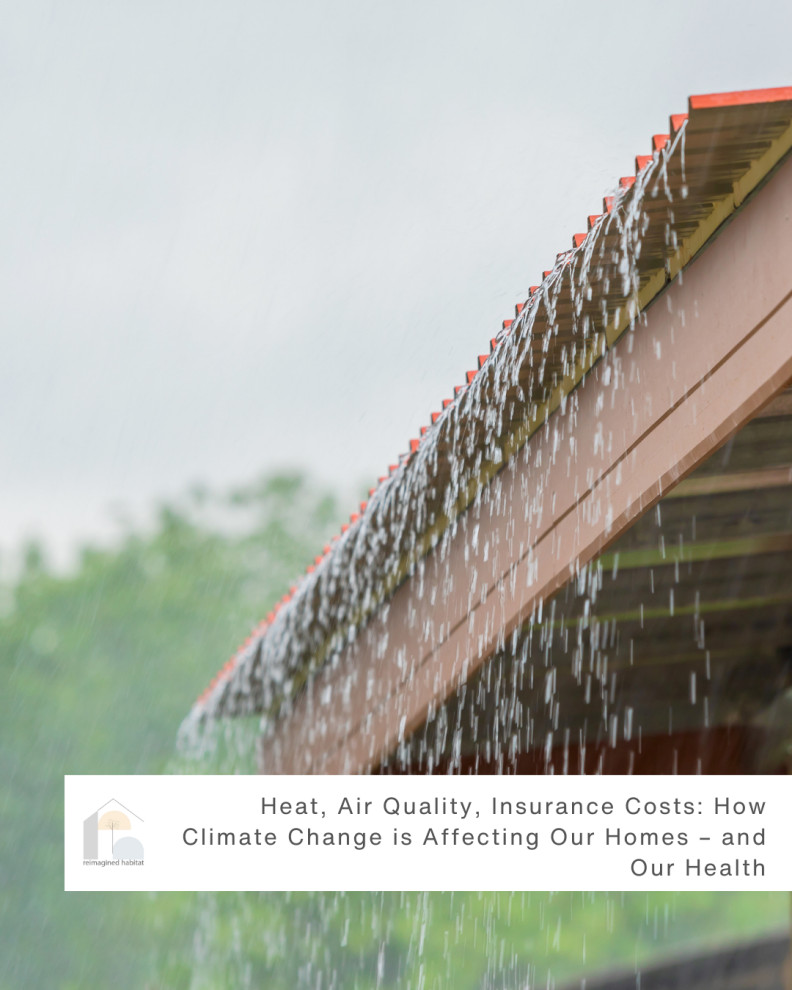Heat, Air Quality, Insurance Costs: How Climate Change is Affecting Our Homes – and Health

This year alone, we’ve seen climate extremes wreak havoc globally.
- 2,300 lives lost in ten days of extreme heat in Europe
- 48,000 people stranded by flooding on the NSW coast
- 16,000 homes destroyed by wildfires in Los Angeles
Following on from this article in The Conversation, the message is clear: our homes are both our first line of defence against climate change, and a huge part of the problem if they’re not designed or upgraded to cope with it.
How Climate Change Affects Our Homes — and Our Health
Poorly built homes make us more vulnerable to climate extremes. The impacts are layered:
- Heatwaves and poor air quality: Extreme heat can break down building materials and worsen indoor air pollution. Bushfire smoke, particulates, and allergens easily infiltrate leaky homes. Indoors, it can become hotter than outdoors, creating unbearable — even dangerous — living conditions.
- Floods, storms, and cyclones: These events cause structural and water damage, introducing toxins, mould, and bacteria. This raises risks of respiratory issues, allergies, and infectious diseases.
- Energy poverty: When homes can’t maintain comfortable temperatures, families are forced into the impossible choice of cranking up inefficient cooling/heating or suffering the health consequences.
At the same time, housing security and affordability are under pressure:
- Insurance costs are rising, especially in high-risk areas.
- Repairs and maintenance after disasters add to financial stress.
- Lower-income households often occupy the least resilient homes and are hit hardest when disasters strike.
- “Climate gentrification” is pushing vulnerable groups into more at-risk areas, repeating cycles of inequity.
The article makes clear: climate change doesn’t affect everyone equally. Poor quality housing amplifies risk, and the most disadvantaged suffer the most.
What Does Climate-Resilient Housing Look Like?
To withstand our changing climate, housing needs to be more than just four walls and a roof. It must:
- Be robustly built — with strong foundations, walls, and roofs.
- Be well insulated and airtight, while allowing controlled ventilation.
- Incorporate shading, reflective roofs, and fire/heat-resistant materials.
- Use energy-efficient heating and cooling to reduce dependence on costly systems.
Crucially, resilience is not just about physical durability — it’s about accessibility and equity. Housing must also be:
- Affordable — so energy bills and insurance don’t push people into poverty.
- Secure — so families don’t face displacement after every extreme event.
- Well located — enabling connection to community, education, and work.
The National Construction Code has started to lift standards around energy efficiency and thermal performance, but much more is needed — especially for rental homes, which house many of the most vulnerable and often fall below minimum quality standards.
At reimagined habitat, this article echoes what drives us every day: healthy, resilient homes are no longer optional — they are essential.
- Passive House-informed designs can ensure airtightness, insulation, shading, and ventilation — protecting families from overheating, bushfire smoke, and poor indoor air quality.
- Homes that we build now need to be designed with the future in mind — energy-efficient, durable, and comfortable homes that are resilient to climate change.
- We need to use data and building science to test and optimise designs from the earliest stages, reducing risks like overheating or air leakage before they become costly mistakes.
We believe every home should be a safe haven — not a source of illness, stress, or financial strain. That means designing for climate resilience, health, and equity together.
Because it’s not enough to just build more houses. We need to build (and retrofit) homes that truly support people’s health, protect them from climate extremes, and remain affordable to live in.
